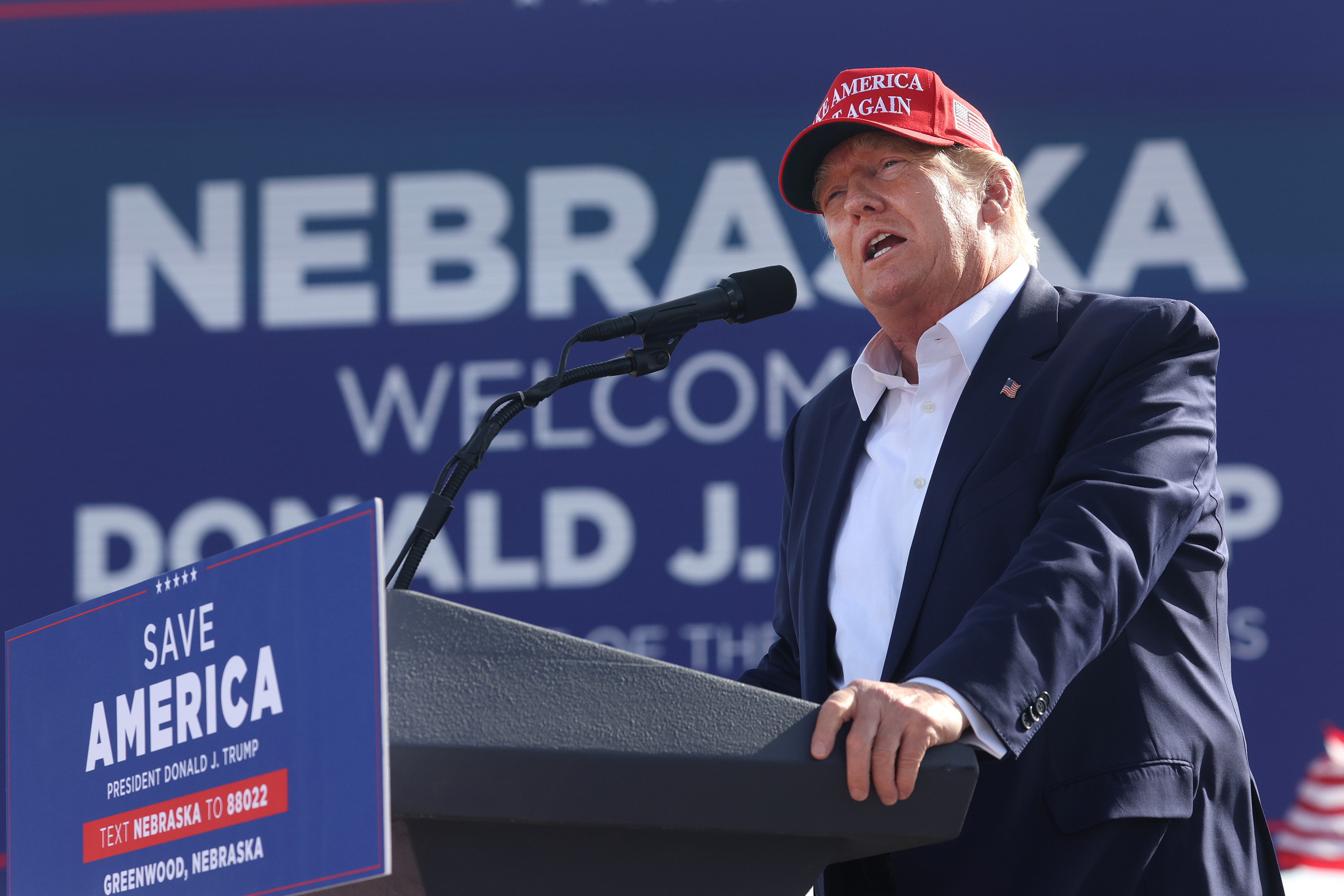Near the end of Alfred Hitchcock's Psycho, a psychiatrist pops in to explain serial killer Norman Bates to his captors—and to us, the audience: "I got the whole story—but not from Norman. I got it—from his mother." It's a scene that always elicits unintended laughs from contemporary audiences: they laugh at Norman's need to explain himself through the voice of his mother, they laugh at the dumbfounded looks on the faces of the local hicks—but mostly they laugh at a film that thinks it must explain a serial killer. I laughed, too, when I saw it again recently. But even as I laughed, it occurred to me that this wasn't just one unintentionally funny moment in this—can it really be?—50-year-old film. It was the only one.
Psycho not only doesn't seem dated, it feels almost completely contemporary, a sort of Dorian Gray of a movie—we get older, but it doesn't. This is true of Hitchcock films generally: take the hats off the men, give the women new hairdos, and a lot of his pictures could open next week. Hitchcock's genre gave him an edge, of course: most humor has the shelf life of milk, but terror never goes out of style. When it comes to what makes us jump, we're still frightened by the same things that scared cavemen. As a result, Hitchcock's films require less explaining, less context, than most old great movies. Which isn't to say they're simple. Gus Van Sant remade Psychoin 1998 with an exact shot-by-shot re-creation and still came up short. More pointedly, Vince Vaughn and Anne Heche fell far short of Anthony Perkins and Janet Leigh. The circumstances of the plot held up fine.
Everything holds up fine in Psycho. That's the mystery. After a half century of far more graphic slasher movies, a genre pretty much kicked off by Psycho itself, why does this dark little film continue to captivate and unsettle us? What makes it so infinitely watchable? After all, the most memorable character is a serial killer, albeit a serial killer as boy next door, and the most likable character gets hacked to death a third of the way into the movie. The dialogue, with a couple of notable exceptions, is perfunctory, and so is a lot of the photography. Other than the cinematic dazzle of the shower scene and Bernard Herrmann's terrific soundtrack, why do I sit there time and again, straight through to the final image of -Marion Crane's car being winched out of the swamp behind the Bates Motel? How sick am I? How sick are we all?
Given Psycho's undeniable influence on popular film, it's tempting to theorize that it had the same pervasive effect on public opinion, that singlehandedly it made us more willing to watch violence, cruelty, and other hitherto unspeakable things, such as flushing toilets. (Psycho was the first film to show a toilet being flushed.) But there is something too simple about that formulation. In his new book, The Moment of Psycho: How Alfred Hitchcock Taught America to Love Murder, David Thomson points out that in November 1959, the same month in which filming on Psycho began, Truman Capote came across an article in The New York Times describing the murder of a Kansas family that would become In Cold Blood. The sordid story of Ed Gein, the serial killer who inspired the novel on which Hitchcock based his movie, was only two years in the past. So maybe Hitchcock was just keeping up with the times. Give him this much: no other filmmakers of his stature saw what he did then, or if they did, they didn't put it onscreen.
Hitchcock said he made Psycho after noting the healthy box office for a string of violent B movies made in the '50s by William Castle (House on Haunted Hill) and Roger Corman (A Bucket of Blood), and wondering what could be done if a more adept director made such a film. He was also said to have been piqued at the success of the 1955 black-and-white French shocker Les Diaboliques, which some critics claimed out-Hitchcocked the master. Determined to prove that he did not need glamorous stars and locations, Hitchcock shot Psycho for about $800,000. To keep costs down, he used the crew from his TV show, Alfred Hitchcock Presents, and shot in black and white (he said he also avoided color because he feared the sight of blood in the shower scene would be more than audiences could take—that's Bosco chocolate syrup you see swirling down the drain). Principal photography started on Nov. 30, 1959, and wrapped on Feb. 1, 1960. Seven of those days were spent filming the shower scene, but cost consciousness in no way interfered with the director's customary mania for detail. According to Stephen Rebello's fascinating Alfred Hitchcock and the Making of Psycho, the director found an office worker in Phoenix much like the fictional Marion Crane and photographed her entire wardrobe to get his leading lady's clothes just right. He listened to the sound a knife made when stabbed into a variety of melons—the sound would be dubbed in to simulate a knife puncturing flesh. When he heard what he wanted, he said simply, "Casaba."
In addition to the toilet, Psycho can take credit for a few more cinematic firsts. It was the first major movie in which the star got murdered early in the proceedings. That prompted another first: Hitchcock and Paramount persuaded theater owners to close their doors once the movie started to preserve the surprises—Hitchcock didn't want latecomers wandering in and wondering where Janet Leigh had gone. When the film was over, the theater was cleared. If this sounds routine, then you weren't born before the '70s, when audiences were routinely permitted to come and go during the showing of a film. If, like me, you miss the ability to blissfully sit through a movie more than once, blame Hitchcock. He got his way in other instances, too: though the censors made only a mild fuss about the toilet, there was a much bigger one about the graphic nature of Marion's murder and the use of the word "transvestite" during the shrink's closing monologue.
The horror I feel when I watch Psycho today doesn't have much to do with the movie's two murder scenes. I've seen them so many times, I can watch them the same way I take in a Cézanne still life. The real horror lies in the randomness of Norman's act. He doesn't know Marion. She is his unwitting and undeserving victim. We think we have been watching a movie about a woman who steals $40,000, but when that shower curtain gets ripped aside, we step into the real movie: a woman stops at a motel, and there she is senselessly murdered. This is not a movie about consequences. This is a movie in which cause and effect no longer exist. The scariest moment in Psycho—the scene that stays scary—is the shot of Norman's hand moving over the board that holds the motel-room keys. He goes to the key for cabin three, hesitates, then goes back to the key for cabin one, the room adjacent to his office, from which he can spy on the occupant through a hole in the wall. In that moment, Marion's fate is sealed. Just for good measure, Hitchcock shows Norman peering through the hole, then lets the audience take a peek at Marion as she undresses—as good as saying: this whole movie is a peep show and all of you out there in the dark are voyeurs right along with Norman. Hitchcock was a man of dark neuroses, and he knew how to share.
Not that he was the least bit comfortable talking about those neuroses, or feelings of any kind. In Hitchcock/Truffaut, a book of interviews with him conducted by François Truffaut, Hitchcock claimed that what "made me decide to do the picture was the suddenness of the murder in the shower, coming, as it were, out of the blue. That was about all." But anyone who felt that way would never have expended the meticulous care with which Hitchcock crafted the scene when Marion eats supper in Norman Bates's study in the motel. With its dialogue about the traps people fall into and how hard it is to escape one's lot in life, this is one of the most affecting scenes in any Hitchcock movie. It makes us care intensely about both people, with the effect that we suffer all the more when Marion dies a few minutes later, and, weirdly, makes us care about Norman for the rest of the movie.
Psycho also made slasher and horror movies acceptable, if not respectable, to the mainstream, ushering in a half century of violence and bloodletting on the screen that nothing can stanch. The public's appetite for seeing actors sliced, diced, and chain-sawed is apparently without bottom—and without discrimination. No more than a handful of those movies are worth seeing more than once, if that. Dressed to Kill, Carrie, Jaws, The Exorcist—it's easy to roll-call the exceptions. The one thing they share with Psycho is their desire to marry the ability to make people jump with the desire to make those same people care, at least a bit, about the characters getting murdered onscreen. Carrie might have been successfully terrifying even if director Brian De Palma and Sissy Spacek had not collaborated to make us identify with poor, hapless Carrie on her arduous journey to that blood-soaked prom. But it's a good bet that we wouldn't be going back to that film again and again if they hadn't worked so hard to enlist our sympathy.
Hitchcock was never credited as a great humanist, but that, underneath all the dazzling technique and droll humor, is what he was, and that's the lesson good movie directors take from his films. He made films about spies and murderers and cat burglars, but at the heart of nearly all his movies, and certainly his greatest ones, are ordinary people caught up in circumstances they can neither explain nor control. North by Northwest is a glossy spy thriller, or pretends to be. But the microfilm that the bad guys are smuggling out of the country—that's just what Hitchcock called the MacGuffin, the pretense for the movie, the silly excuse upon which he pinned his real story: a man is mistaken for another man and nearly murdered because of this mistake. Those of us in the audience who have never seen a spy can identify with that man, even when he's played by Cary Grant. The director always starts with the question: what would an ordinary person do in this situation? And because most of us in the audience are ordinary people, we perk right up. That's us up there on the screen, no matter what the plot is about.
Hitchcock kept making movies for another 15 years, but Psycho marks the last time that he managed to put the true heart of darkness on the screen—a world ruled by chance, where random violence makes a monkey out of anyone who tries to explain it. It was Hitchcock who taught us to laugh at the psychiatrist. For those of us who have grown up on this movie, it was a cruel education. That we take the film's shock in stride today only shows how well we learned our lesson.
Uncommon Knowledge
Newsweek is committed to challenging conventional wisdom and finding connections in the search for common ground.
Newsweek is committed to challenging conventional wisdom and finding connections in the search for common ground.
About the writer
To read how Newsweek uses AI as a newsroom tool, Click here.





